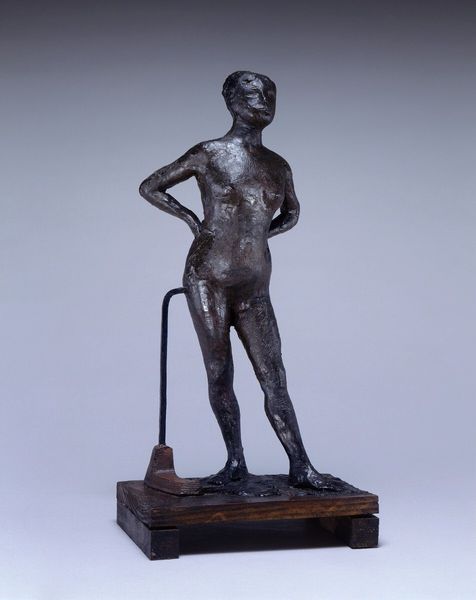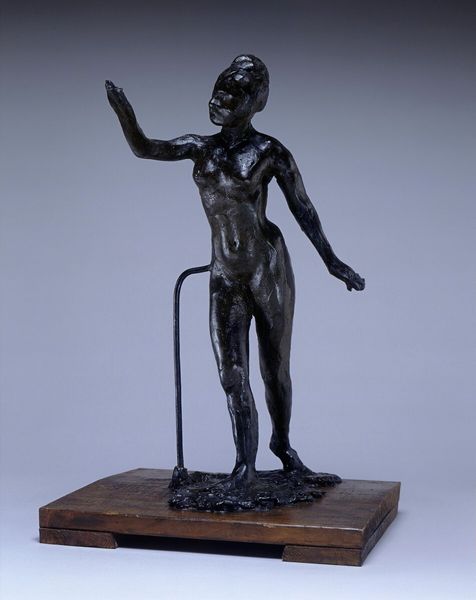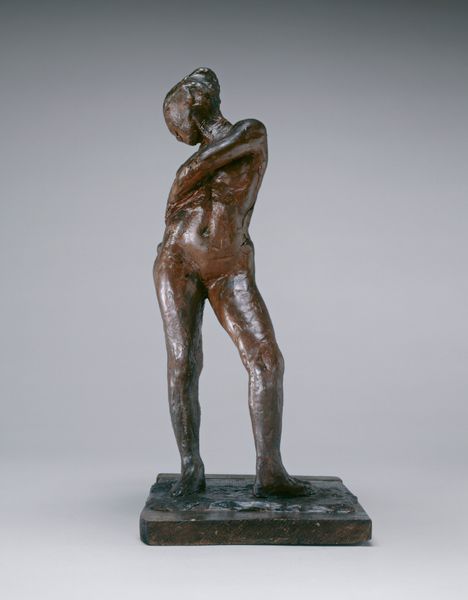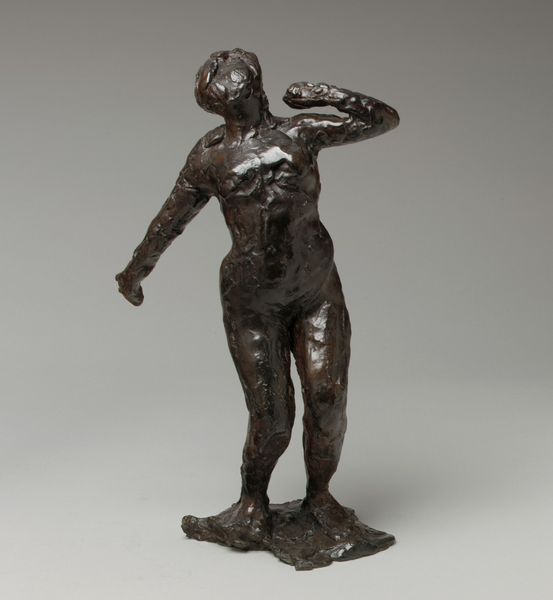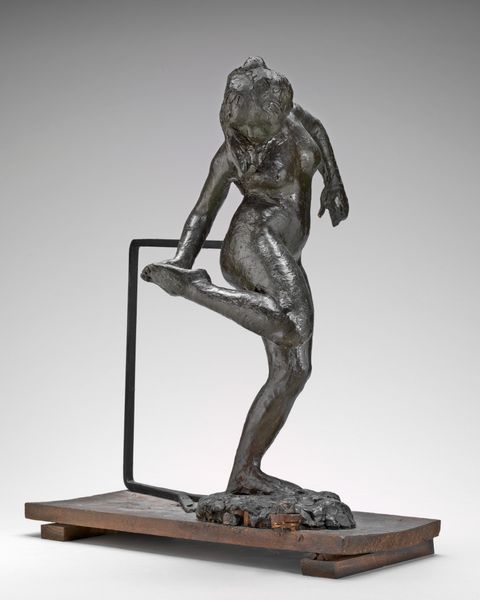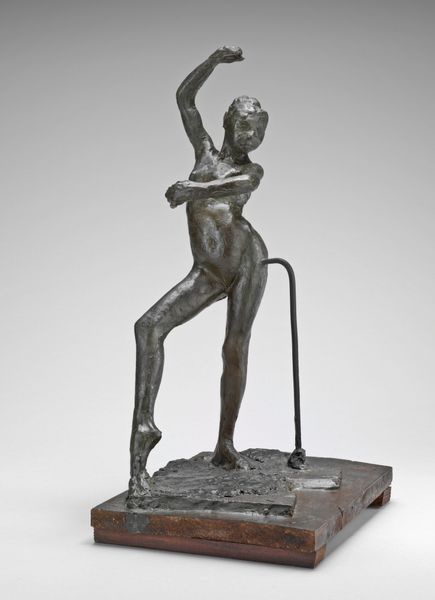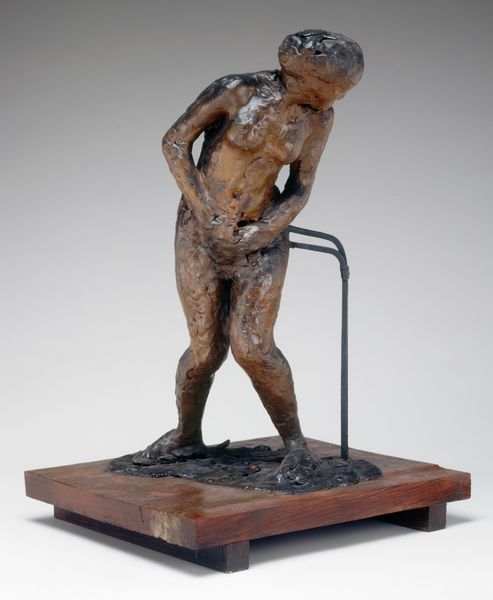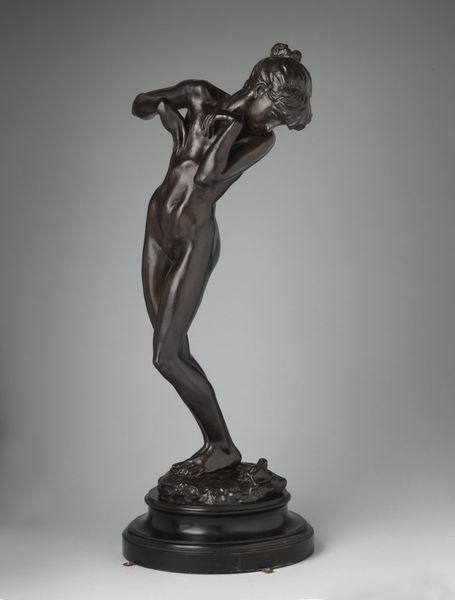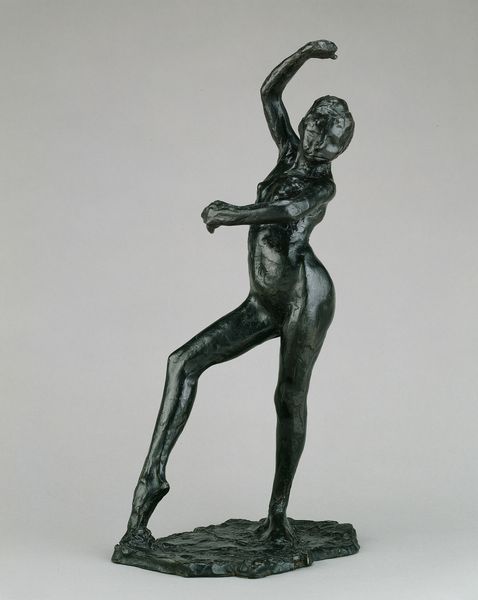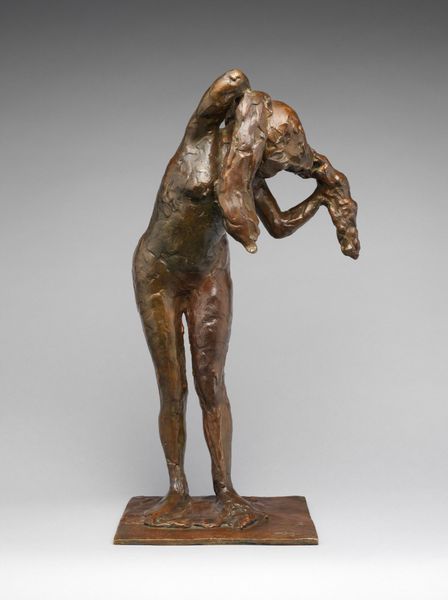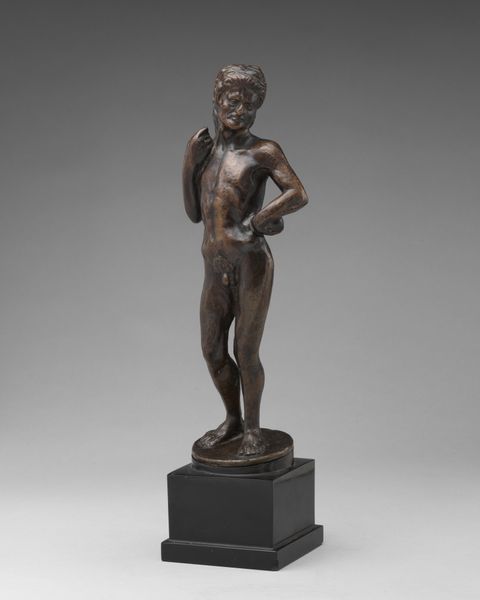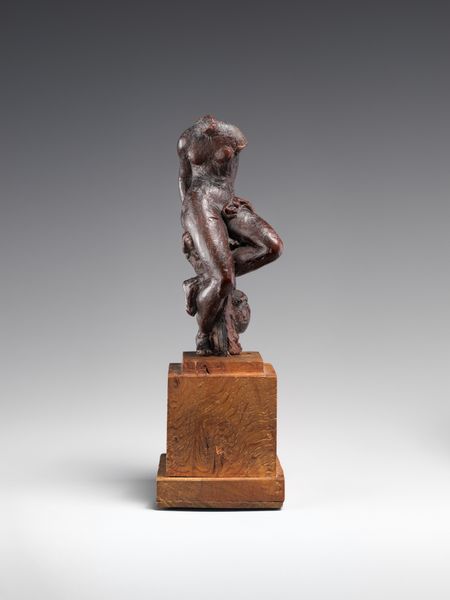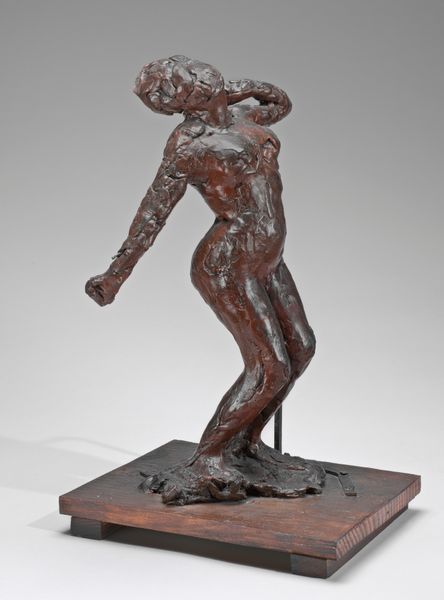
Dimensions: overall without base: 43.1 x 14.3 x 17.4 cm (16 15/16 x 5 5/8 x 6 7/8 in.)
Copyright: National Gallery of Art: CC0 1.0
Editor: Here we have Edgar Degas’ bronze sculpture, *Pregnant Woman*, created sometime between 1896 and 1911. It's surprisingly small. I'm struck by the intimate way she’s holding her stomach. What do you see in this piece, given the themes Degas usually explored? Curator: This piece, while less characteristic than his ballet dancers, speaks volumes about the loaded imagery of the maternal form. Notice how her gaze is directed downwards, an echo perhaps of Renaissance depictions of expectant Madonnas. The sculpture resonates with vulnerability and quiet strength, feelings intrinsically tied to the archetypal experience of motherhood. Editor: Do you think Degas was trying to make a statement about women? Curator: Possibly. Throughout art history, pregnancy is often either idealized or hidden. Degas seems to offer a more grounded portrayal, yet the use of bronze, a historically significant material, elevates the subject. What emotions does this evoke in you? Editor: A sense of awe, I think. It makes me reflect on how artistic representations, like this bronze figure, influence and solidify our understanding of profound human experiences. Curator: Precisely. Visual symbols possess the power to transmit cultural memory, shaping our understanding of ourselves and others across time. Editor: So much more to unpack than first meets the eye! Curator: Indeed. The beauty lies in its layers, waiting to be explored and understood, reminding us how art truly holds a mirror to society.
Comments
No comments
Be the first to comment and join the conversation on the ultimate creative platform.
